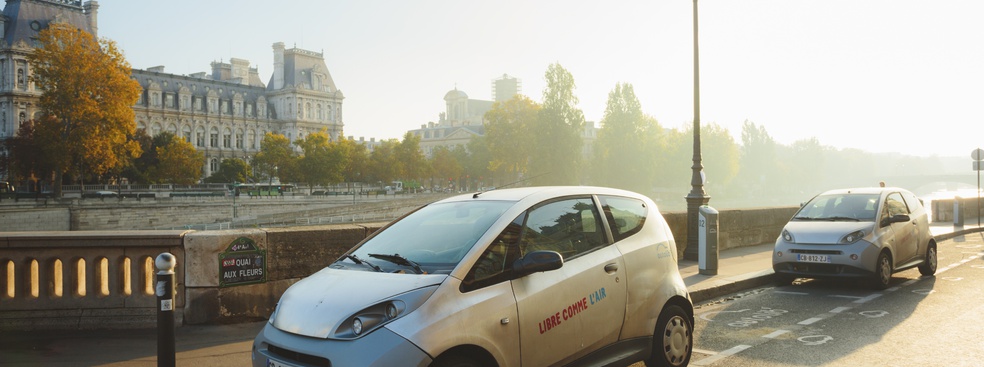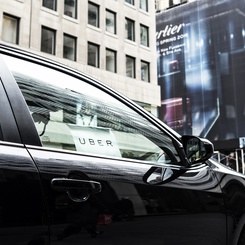At the end of 2015, hardly a week went by without at least one market research or consulting firm publishing a report about the future of mobility. This surge of activity is likely related to the Cop21 Conference in Paris. Indeed, this event underscored the critical nature of mobility issues and the impact they would have on the world’s ability to foster sustainable economic growth, considering global warming, the scarcity of clean and affordable energy resources, and growing urbanization. Beyond this Cop21 effect, the future of mobility still brings up many questions that, so far, auto industry leaders have been unable to answer.
Electric vehicles, a growing market for car manufacturers
On the one hand, concerns about climate change are creating a favorable context for car manufacturers. Because governments are pushing to set up more restrictive vehicle emission standards, car manufacturers are developing less polluting vehicles. This trend, along with the advances in battery technologies and charging infrastructures, is renewing interests for electric vehicles (EV). Consequently, this market is expanding very quickly. In France, between 2015 and 2016, registrations for EVs increased by 64 %, crossing the threshold of 1 % of new car sales. The first beneficiaries of this expansion are the original equipment manufacturers, such as Renault-Nissan, General Motors or Mitsubishi, which now cover nearly half the global market. Consequently, many assume – and the traditional industry leaders especially – that car manufacturers are in the best position to redefine the automotive industry’s value propositions, products and ecosystem.
Electric mobility, a growing playground for new actors
On the other hand, the spectacular growth of large and smart cities is forcing consumers to forgo vehicle ownership and adopt alternative mobility solutions. These do not appear to favor car manufacturers and has triggered interest of newer, more service-oriented economic actors. These new mobility actors include large, established businesses, as well as startups. They’re working within a variety of industries and hailing from different backgrounds, and making moves to shape new and extended mobility ecosystems. To cite some well-known examples: Apple, Google, and IBM are companies with a great deal of experience and expertise in digital technology and business information; Uber, Autolib, and Blablacar are the designers of disruptive car-sharing and pooling activities; Tesla, Vinci or ABB are the main investors in charging network and smart infrastructures. All these new mobility industry actors have so far hesitated to sign any strategic alliances in order to cover the entire scope of the electric mobility value chain and to capture the market by offering globally standardized solutions and services to their customers.
A road to an emerging industry
These trends open the road for an emerging industry which Donada and Attias (2015)[1] called “Electromobility 2.0”. This term is not restricted to the creation of a market for EVs. It also related to the performance and longevity of electromobility: batteries, vehicle-to-grid integration, new focus on collaborative businesses (car-sharing and car-pooling), investment in dedicated infrastructures, and the adoption of appropriate public policies and regulations. Developing Electromobility 2.0 means creating the mobility of the future and growing an emerging industry.
A road for ESSEC researchers
Through the chair Armand Peugeot, ESSEC and CentraleSupélec researchers study the development of the emerging Electromobility 2.0 industry with the support of PSA Peugeot Citroën. During the 3rd international conference of the chair (organized at the ESSEC campus in Singapore in December 2015), more than 90 scholars presented and discussed about some of the main challenges for the growth and sustainability of the emerging Electromobility 2.0 industry:
- Changes in consumer behavior and their mobility needs,
- Changes in current automakers business models,
- New business opportunities and emerging competitors,
- Grid integration and batteries issues.
- Public policies, regulation and standardization requests.
The findings presented during that conference raised some urgent strategic questions for the car manufacturers: How do consumers evolve from vehicle possession to a mobility offer? What are the main drivers and consequences of this evolution? Which business model should traditional automobile industry leaders adopt in order to continue their development and ensure their position of leadership in the new ecosystem of the Electromobility 2.0? These are issues on which the chair Armand Peugeot is already working.
[1] Donada C., et Attias D. (2015), "Food for thought: Which organization and governance to boost radical innovation in the Electromobility 2.0 industry?", International Journal of Automotive Technology Management, 15, 2, 105-125.









